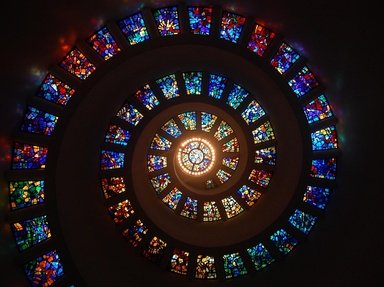Quiz Answer Key and Fun Facts
1. One Asian tradition calls their god of the wind Fei Lian, whose human form is known as Fengbo. Which country does this wind deity hail from?
2. In Roman Catholicism, people sometimes invoke the intercession of certain saints to protect the believers. Whom do Catholics venerate as protector against storms?
3. The Quran contains several references to wind.
4. According to Judaic tradition, two people never died. Enoch reached the age of 365 years and then "walked with God, and he was not, for God took him" (Gen. 5:24). The other was Elijah, taken away by a chariot in a whirlwind. Where did this happen?
5. The Iranian god of the wind, Vate, is a dual-natured divinity of the wind and the atmosphere. Which religious tradition does it belong to?
6. What is the name in Shintoism for wind in general?
7. In the Australian Dreamtime, one of the creator divinities was Baiame, the Sky Father. Which sites (reserved to men only) were created to worship Baiame?
8. Many religious or similar practices invoke the classical elements of earth, water, fire and wind (or air). In 1954 Gerald Gardner introduced in England a contemporary practice which adds the ether or spirit to these four classical elements, and associates them with cardinal directions. Which belief has thus earth, wind, fire, water and spirit at the tips of a pentagram?
9. "And it came to pass that the Lord God caused that there should be a furious wind blow upon the face of the waters, towards the promised land; and thus they were tossed upon the waves of the sea before the wind." This quote is from a holy book that tells the story of the Jaredites. Which religious denomination has Moroni as narrator of the story of the Jaredites?
10. Hinduism is a religion with many deities. In the Hindu religion, who is the main deity of the wind?
Source: Author
JanIQ
This quiz was reviewed by FunTrivia editor
looney_tunes before going online.
Any errors found in FunTrivia content are routinely corrected through our feedback system.
